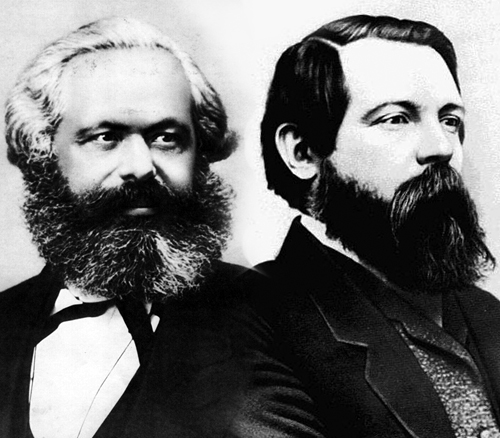
“The Zoroastrian Faith: Tradition and Modern Research” is a book by S A
Nigosian, originally published in 1993. Unfortunately, I don´t know where the
modern research stands 27 years later. Judging by Nigosian´s book, very little
is certain concerning the origins and history of Zoroastrianism, one of the
world´s first monotheist faiths. It seems we can only be sure of three things:
Zoroastrianism was founded by a prophet known in Greek as Zoroaster, Zoroaster
lived in an area where some archaic dialect of Persian was spoken (his real
name would have been Zarathustra), and he lived at some point before Cyrus the
Great created the first Persian Empire circa 559 BC, since Cyrus is believed to
have been a Zoroastrian (whatever that meant exactly at the time). And that´s
basically it! But did Zoroaster come from Azerbaijan, Media or Bactria? Did he
live 8000 years ago during the Neolithic, or shortly before the ascension of
Cyrus? And what exactly was his religious message, anyway? While Nigosian
cautiously tries to answer these questions, I think it´s obvious that nobody
really knows. Or knew in 1993 (AD).
It´s often claimed that Zoroastrianism heavily influenced Judaism. Through
Judaism, it also had an impact on Christianity and Islam (Islam could also have been directly influenced
by the Zoroastrian faith). Among ideas that supposedly comes from Zoroaster
are: strict monotheism, belief in archangels, the immortal soul, the
resurrection of the body, the millennium, the Messiah, jihad, Heaven and Hell,
and the Devil. No less! However, it´s not at all clear to me whether this can
really be proven in a robust way. The holy scripture of the Zoroastrians, the
Avesta, is really a patchwork of texts from entirely different time-periods,
and the oldest portions (the Gathas) are written in an obscure Old Persian
dialect (simply called Gathic) which was a dead language at the time the Avesta
in its present form was assembled about 700 years after the death of the prophet.
Or was it 7000 years? The exact meaning of the Gathas was unclear to the
medieval scribes who translated the Avesta into Middle Persian and attempted to
comment on it. My impression is further that many of the doctrines
traditionally associated with Zoroastrianism (such as dualism or the Messiah
figures) come from the Bundahishn, also a medieval work. If so, Zoroastrianism might
very well have been influenced by Islam and Judaism, rather than the other way around. Perhaps
the dualism is a Manichean idea?
I´m not entirely surprised. As of late, I´ve begun to suspect that most world
religions didn´t really have a “founder”, per se, or if they did, it wasn´t the
guy everyone thinks it was. Examples of religious founders who might not have
existed include Abraham, Moses, Jesus, the Buddha and Lao-tse. Did Nichiren
exist? Muhammad probably did exist, but since the traditions concerning his
life weren´t written down until centuries later, they might not be entirely true
either. So why should Zoroaster be any different?
The most likely scenario, judging by this and other books, is that
Zoroaster did have a monotheist message, elevating the traditional Iranian
sky-god Ahura Mazda into the role of sole deity. This religion was for one
reason or another taken up by the Achaemenid dynasty and became the
state religion of the Persian Empire. Over time, Zoroastrianism accommodated to
polytheist and dualist notions prevalent in the Empire. This is how the faith
acquired its belief in angelic beings which are de facto worshipped, and also
effective veneration of the sun, the fire, the earth, the sacred waters, etc. Originally
a tolerant faith, the Zoroastrian priesthood and the imperial authorities
started to persecute followers of other religions during the Sassanid dynasty,
interestingly enough at about the same time as the Roman Empire became Christian
(and just as intolerant). The execution of Mani, the founder of Manichaeism, is
the most notorious example of this. Another is the anti-Christian persecutions
in Persian-occupied Armenia.
When Persia became Muslim after the Arab conquest,
Zoroastrianism seems to have been heavily persecuted in turn – despite Zoroastrians
being declared “a people of the book” – unless, of course, the accounts are heavily
polemical. What if the Persians converted to Islam tired of their old
priesthood? What *is* clear is that Zoroastrianism, for almost one thousand
years the dominant religion in Iran, was reduced to a small minority. Today,
most Zoroastrians live in India, where they are known as Parsees (“Persians”)
and have, at least to some extent, assimilated into Indian society. The Parsee
community is apparently split between “reformist” and “traditionalist”
factions.
Some of the traditions described by Nigosian strike the
outsider as somewhat bizarre, such as purification of the body by cow urine, the
custom of letting deceased relatives be eaten by vultures, or the idea that
killing snakes is meritorious. (OK, not really – I hate snakes.) Otherwise, Zoroastrianism
strikes me as more logical than I expected, and also more sympathetic than
certain other religions, none mentioned here.
Zoroastrianism doesn´t claim that the good god Ahura Mazda and the
evil “god” Ahriman are equally strong or have been fighting for eternity. While
Ahriman has existed since beginningless time, for most of that period he lived
in the “abyss”, the dark dimension of the world, completely oblivious to the
existence of Ahura Mazda and the world of light. Only about 6000 years ago did
Ahriman became aware of the light and rose from the pit, filled with a desire
to take possession of Ahura Mazda´s domain. Thus began the conflict between the
Wise Lord and the Adversary, a conflict that will end with Ahura Mazda crushing
the evil powers once and for all. The physical world was created by Ahura Mazda
as an arena for the struggle. The world was originally perfect, but has been
deformed by the activity of Ahriman and his demonic minions (all those
snakes!). Humans have an absolutely free will, and can choose between the Good
and the Evil.
Surprisingly, Zoroastrianism is postmillennial. The millennium won´t be
established until a majority of humanity has already chosen the path of light
and embraced the good religion, making the Earth a much better place. Thus, the
establishment of the millennium is dependent on humanity´s free will. It won´t
arrive until most of us actually become Zoroastrians. Also surprisingly, Zoroastrianism
is universalist. In the end, even the evil people will seek Ahura Mazda´s
forgiveness and receive it. Hell is temporary, really a kind of purgatory. Ahriman
and the demons, by contrast, will be annihilated completely. Thus,
Zoroastrianism is “universalist” for humans and “annihilationist” for demons!
One
thing that struck me when reading Nigosian´s account is that Zoroastrianism
sounds like a peculiar hybrid of Judaism (or Islam) and Manichaeism. The
dualism is similar to Mani´s religion, while the notion that the material world
is at bottom a good creation and that history has a meaning and culmination,
sounds like “Late” Judaism or Islam. So does the emphasis on free will. I
suppose Ahriman is similar to the Christian Devil, but what´s lacking is the
Christian notion of the atonement. As already mentioned, the faith even has
some “polytheist” or “animist” traits, since its followers really do seem to
worship or honor the sun, the earth, the rivers, and so on. That´s of course my
interpretation – others may see it differently.
“The Zoroastrian Faith” (the book) is recommended reading.
_(cropped)1.jpg)


_-San_Diego_Zoo-8.jpg)
.jpg)

















